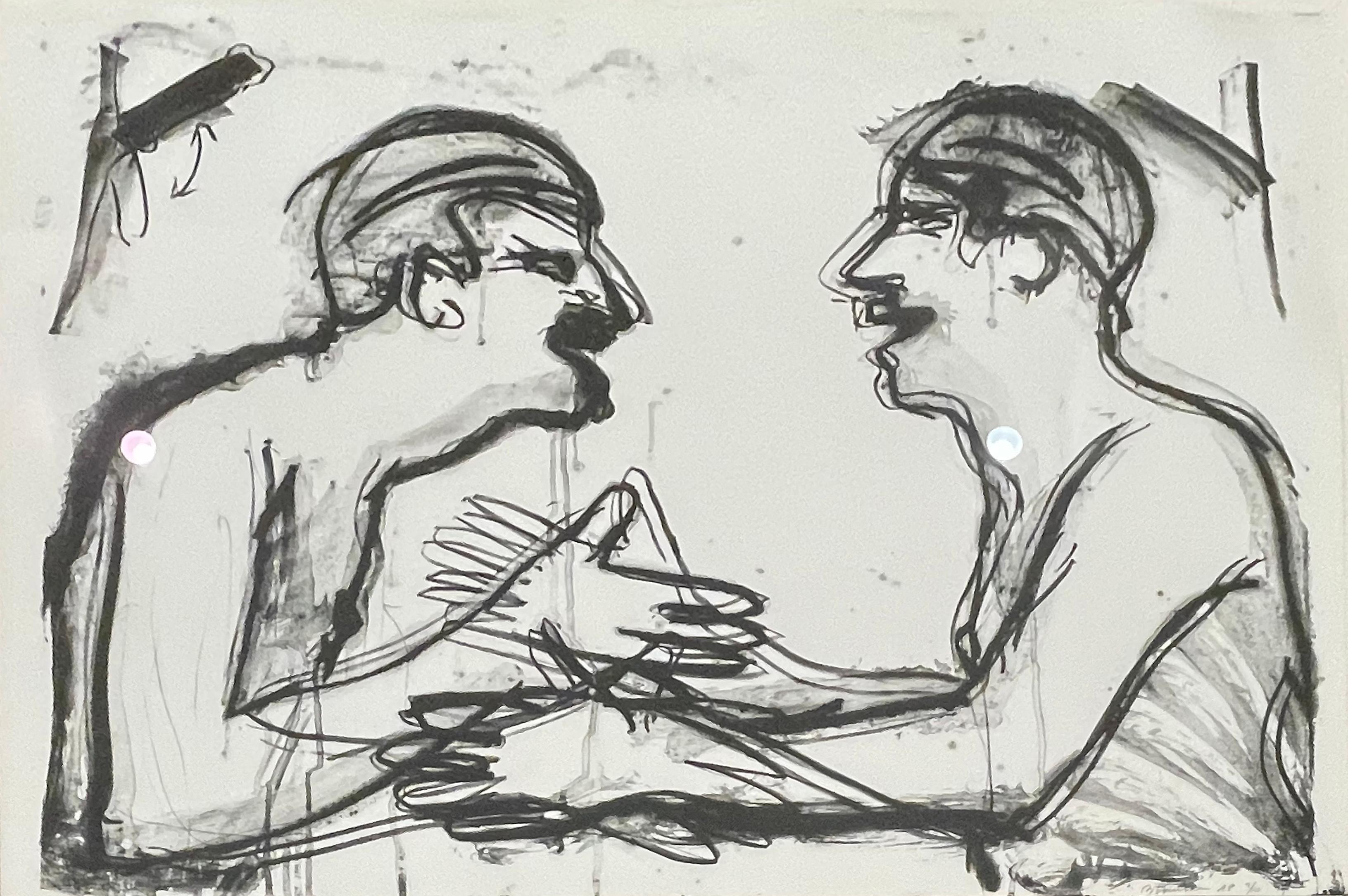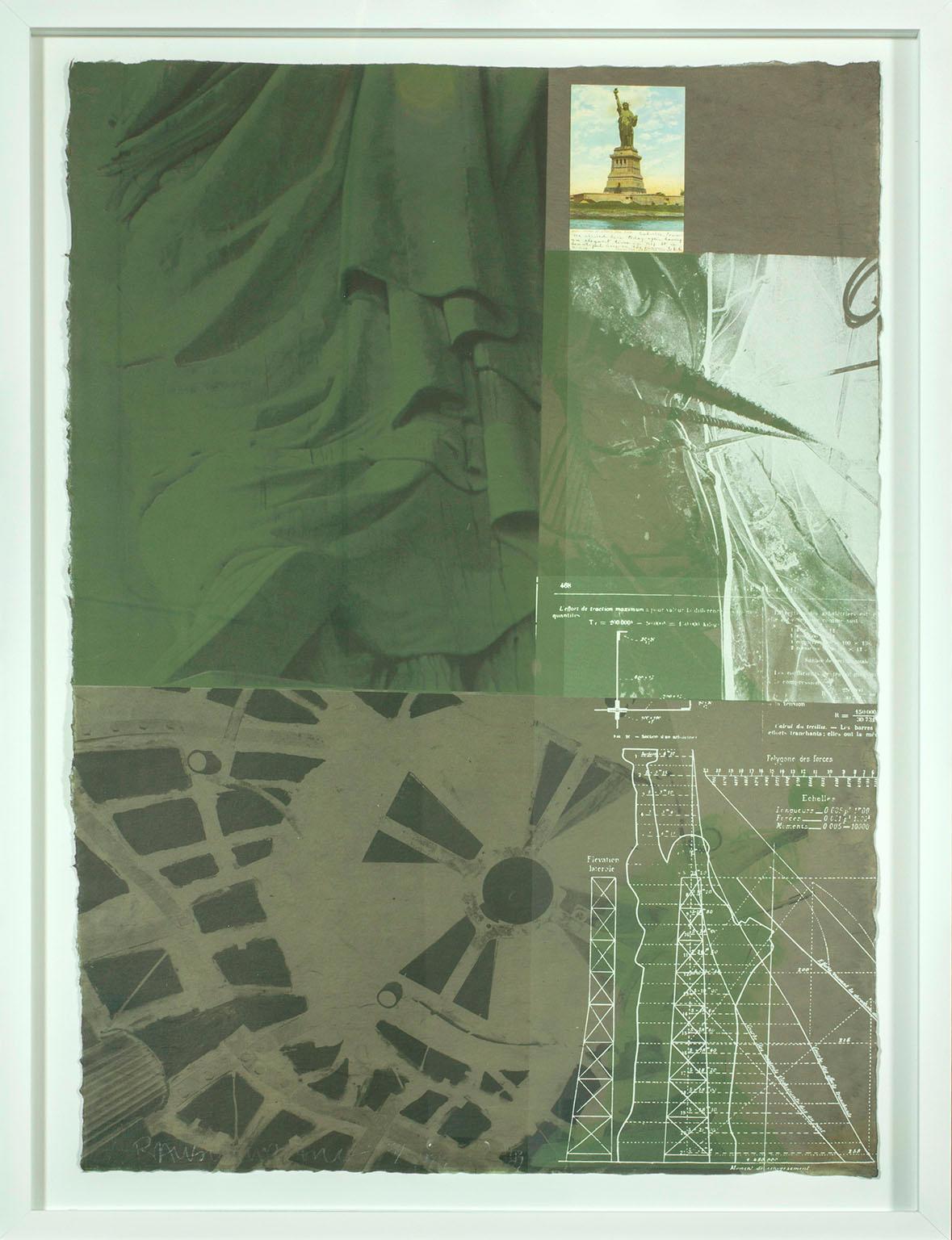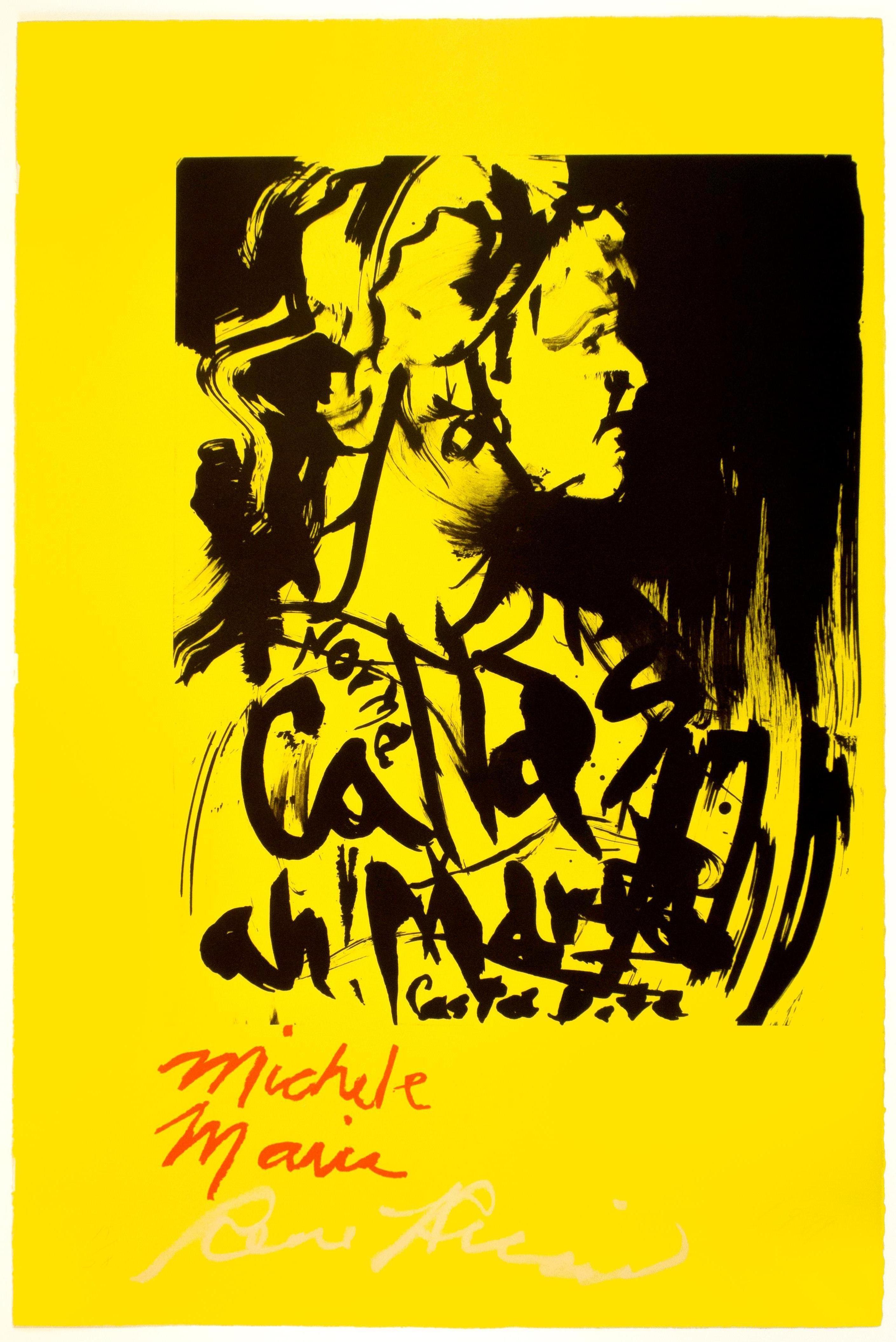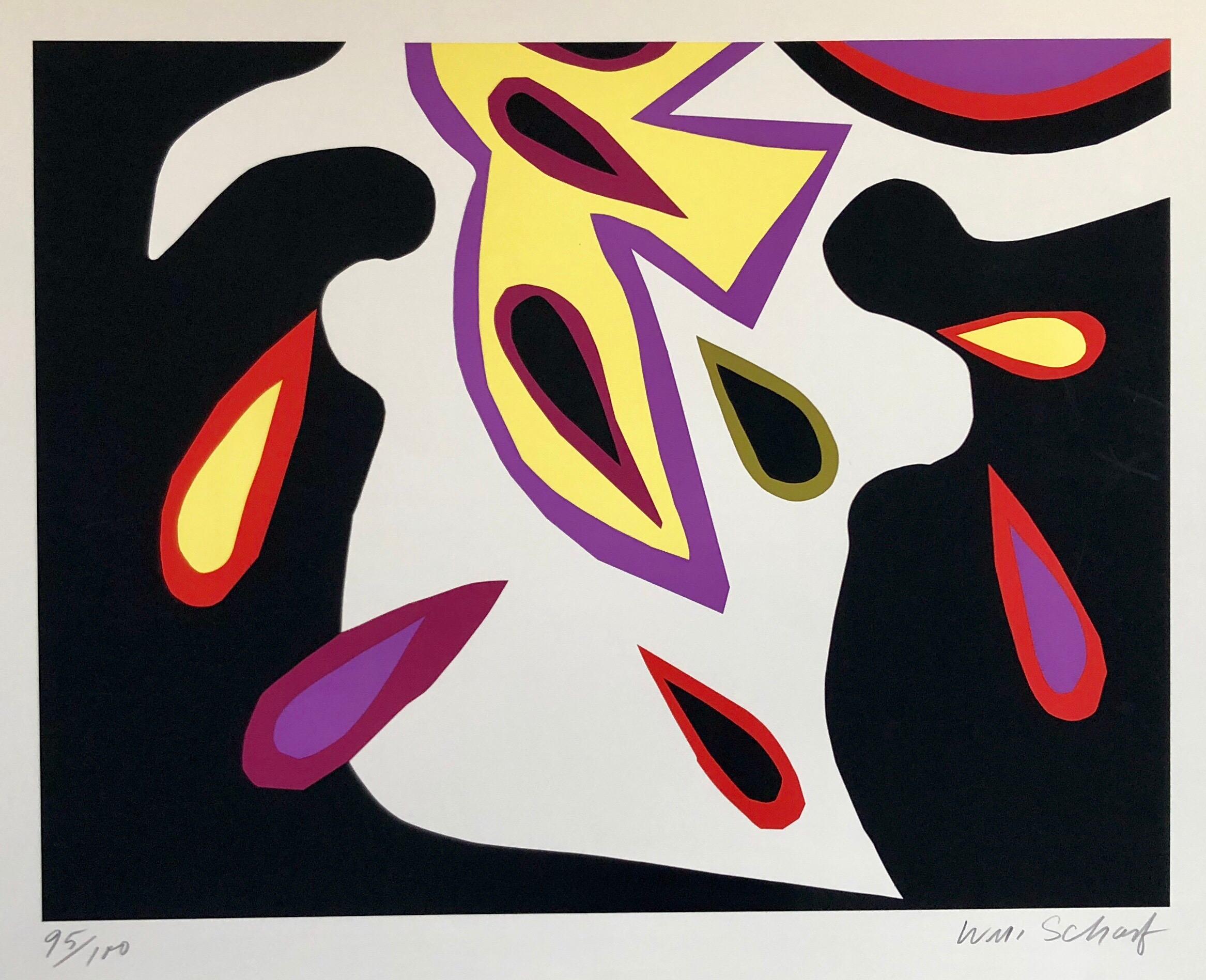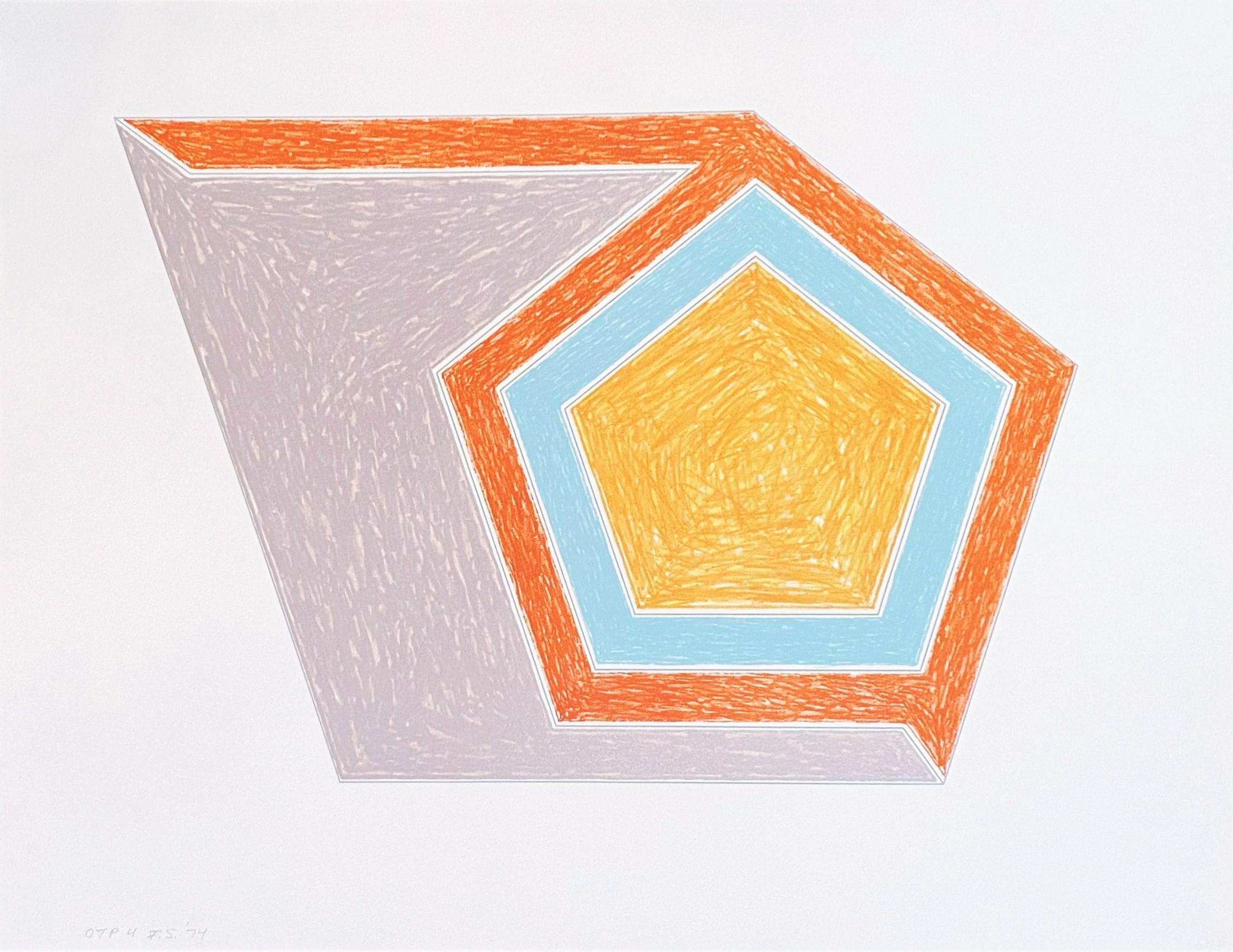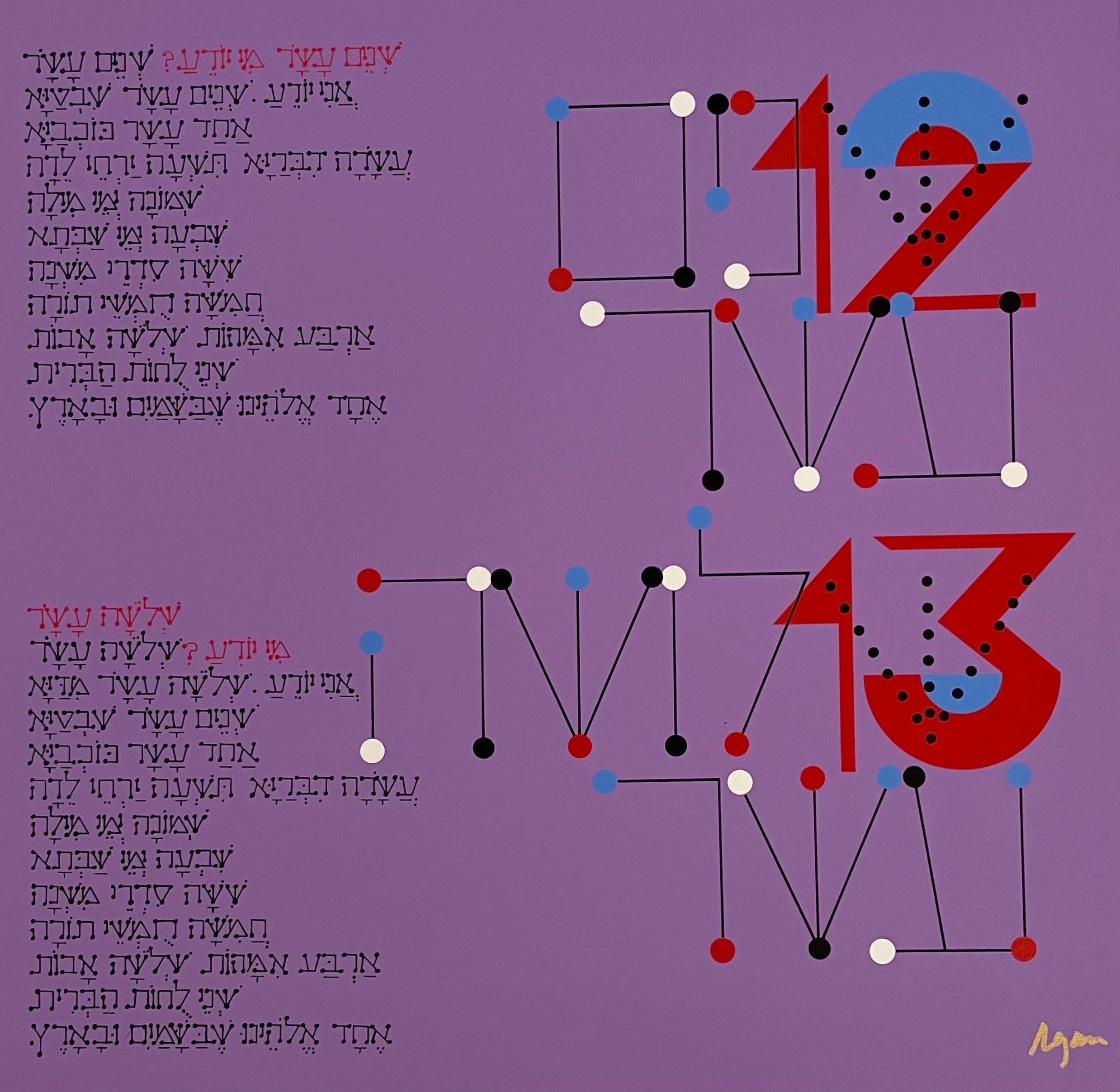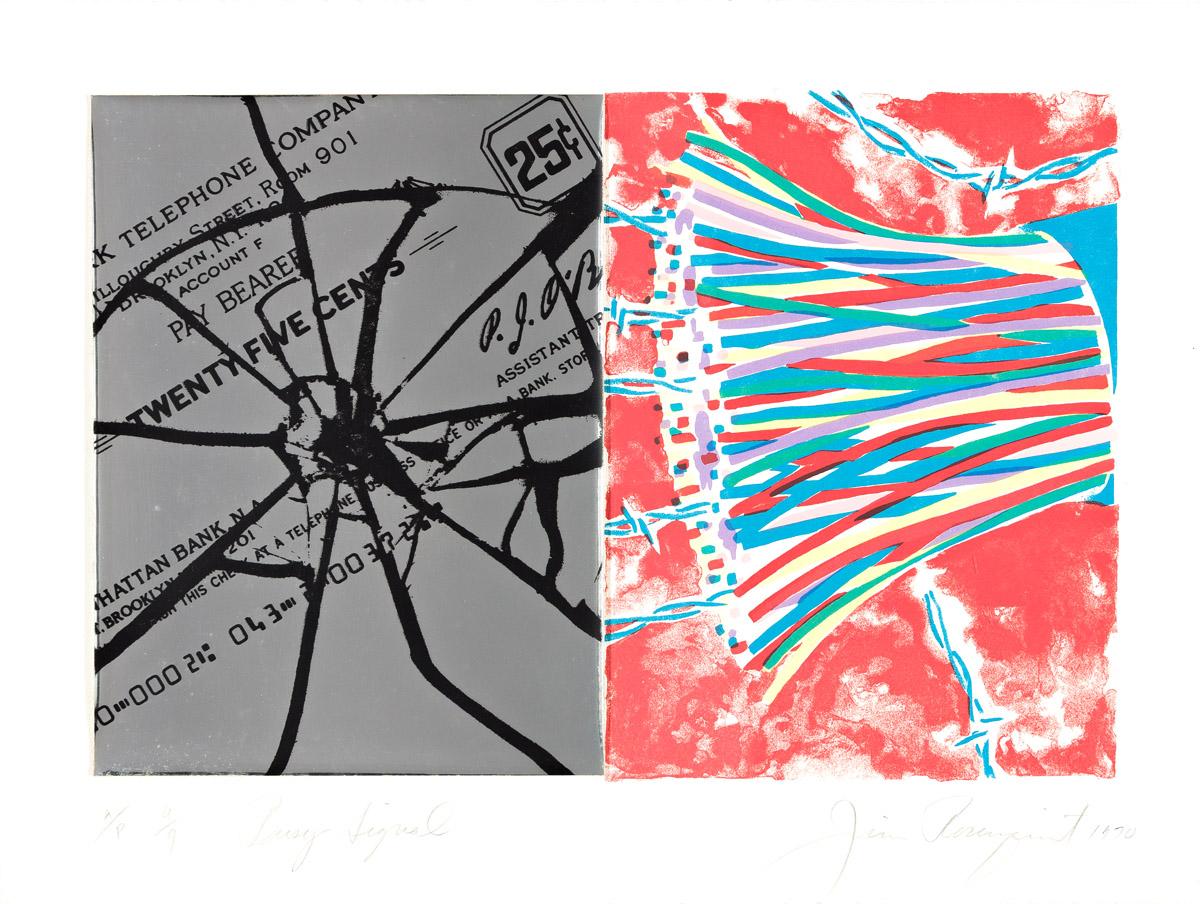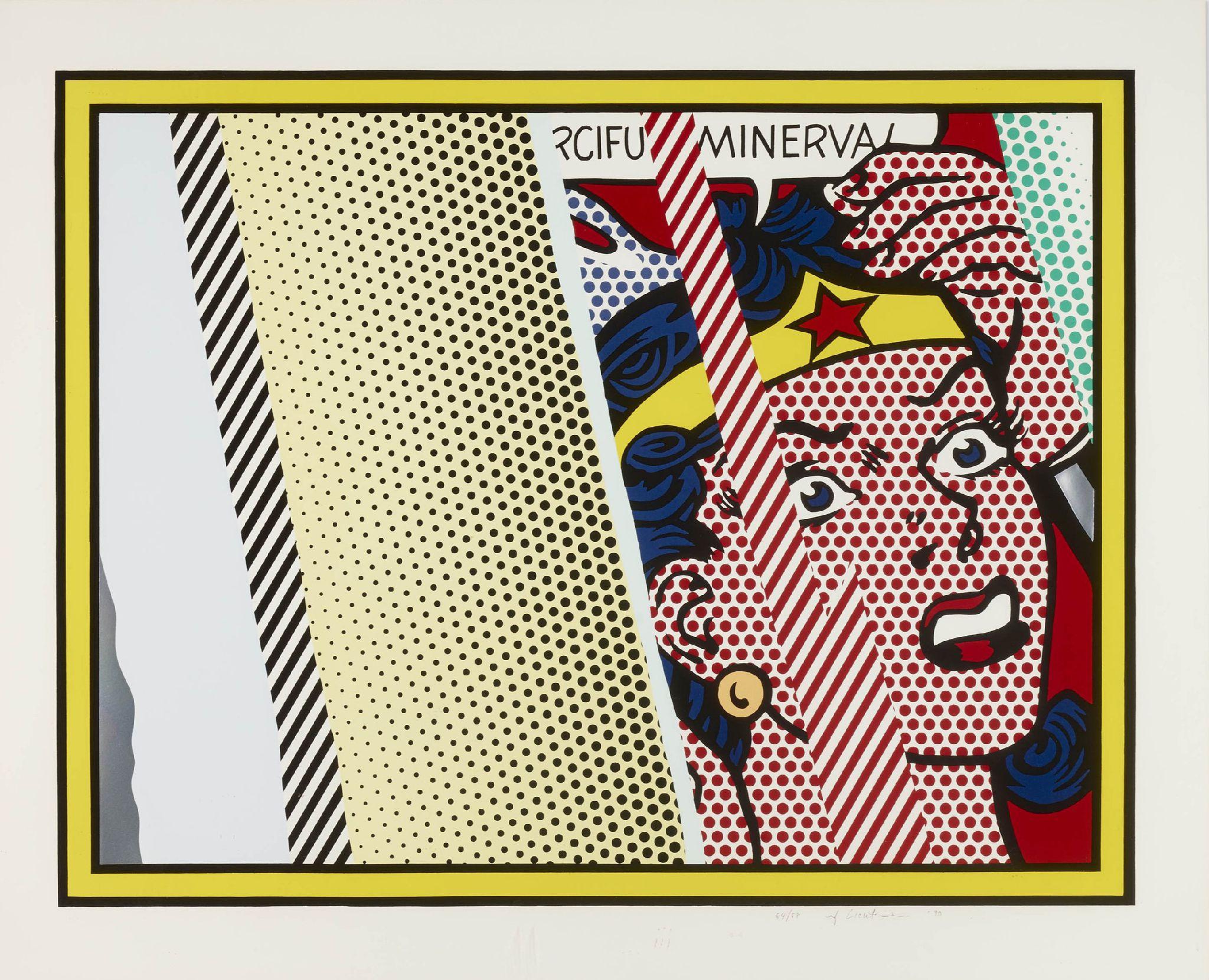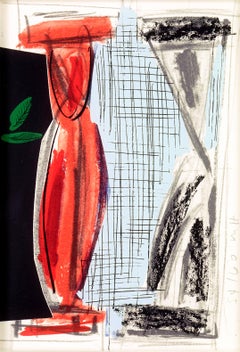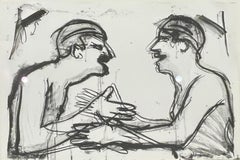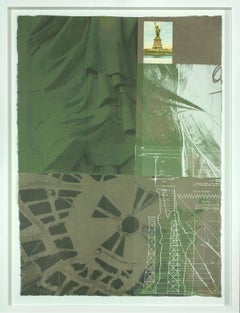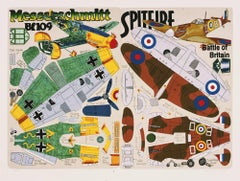
Battle of Britain
View Similar Items
1 of 3
Malcolm MorleyBattle of Britain2002
2002
About the Item
- Creator:Malcolm Morley (1931, British)
- Creation Year:2002
- Dimensions:Height: 45.25 in (114.94 cm)Width: 59.5 in (151.13 cm)
- Medium:
- Movement & Style:
- Period:
- Condition:Gemini G.E.L. is the publisher of this edition and all work sold from the gallery is a primary market sale. Impression numbers are assigned at the time of invoicing, and all artwork is unframed.
- Gallery Location:West Hollywood, CA
- Reference Number:1stDibs: LU14922535693
You May Also Like
- Two Columns (framed): colorful pop art abstracted Greek pillars Micheal HursonBy Michael HursonLocated in New York, NYPop art scene of abstracted Greek pillars and green leaves. Drawings in black and white, pale blue, red and grey compose this colorful print. Layers of p...Category
1980s Contemporary Figurative Prints
MaterialsLithograph, Screen
- Fingers and Holes (Black and White)By Bruce NaumanLocated in Hollywood, FLArtist: Bruce Nauman Title: Fingers and Holes (Black and White) Size: 30 x 40 Inches Medium: Lithograph and Screenprint Edition: Edition of 50. AP #7/10 Year: 1994 Notes: Hand Signed, Dated and Numbered by the Artist in Pencil. Printed by Gemini Gel #36.34. From the collection of Brook Alexander Gallery, NYC. Fingers and Holes, a captivating artistic exploration initiated by Bruce Nauman (American, born 1941), originated from a unique challenge he set for himself. Using his non-dominant hand, he drew his right hand, and vice versa, meticulously annotating each sketch with the count of holes formed between the fingers. This seemingly simple endeavor evolved into a profound study of algebraic topology, a mathematical field investigating fundamental properties of distorted objects, such as solids and voids. Nauman ingeniously translated his anatomical sketches into this abstract language. In this realm of mathematical inquiry, seemingly dissimilar objects transform into one another. A coffee cup and a doughnut, for instance, are considered equivalents due to their shared characteristic of having an unbroken surface surrounding a single "hole," a concept known as homeomorphisms. Nauman's deep dive into topology revealed connections between disparate elements, encapsulated in his statement, “Things that don’t look alike morphose one into another.” However, Fingers and Holes goes beyond mathematical intricacies. It delves into the realm of transformation—topological, visual, and linguistic. The iconic "three fingers, one hole" gesture, a symbol of sexual intercourse in what Nauman referred to as "kids’ sign language," served as a pivotal motif. This gesture reappeared in various forms within the series, including daisy chain formations and overlays on clowns' handshakes, which Nauman identified through his exploration. The clowns in Nauman’s work epitomize ambiguity, embodying a spectrum from humor to threat. Their double handshakes, simultaneously obsequious and aggressive, mirror the complexities of human interactions. Nauman found inspiration in this ambiguity, appreciating the clowns for their enigmatic nature. By integrating the "three fingers, one hole" motif into the handshake of his clown prints...Category
1990s Contemporary More Prints
MaterialsLithograph, Screen
- "Statue of Liberty" signed screen print and collage by Robert RauschenbergBy Robert RauschenbergLocated in Boca Raton, FL"Statue of Liberty" screen print and collage by Robert Rauschenberg from the "New York, New York" portfolio published by the New York Graphic Society. Signed Rauschenberg...Category
1980s Contemporary More Prints
MaterialsLithograph, Screen
- Eskimo CurlewBy Frank StellaLocated in New York, NYA very good impression of this color lithograph and screenprint on Arches 88 white wove paper. One of 14 numbered artist's proofs, aside from the edition of 50. Signed, dated, inscri...Category
1970s Contemporary Abstract Prints
MaterialsColor, Lithograph, Screen
- Michele Maria: bright yellow red Maria Callas opera artist portrait with poetryBy Rene RicardLocated in New York, NYTouched by the influence of Andy Warhol, champion of a young Jean-Michel Basquiat, Rene Ricard served as enfant terrible of the 1980s New York art scene. In this bright yellow, red, ...Category
1980s Contemporary Abstract Prints
MaterialsLithograph, Screen, Woodcut
- Bright Vibrant Pop Art Silkscreen Lithograph Print NYC Abstract ExpressionistBy William ScharfLocated in Surfside, FLRed Angel, intensely and seductively colored: swooning purples and reds, ecstatic lemon yellows, and black construction paper. Jostling shapes, geometric and biomorphic, lyrical and hard-edged, refuse to resolve neatly Assemblage, a bold strategy to keep viewers unsettled and curious, the reward for which are profuse and luscious details: varied incidents of refinement, suggestive signs, most in a private code, not merely ornamental but integral to the overall message. William Scharf (born 1927, Media, PA) is an American artist from New York, he teaches at The Art Students League of New York. Painting with acrylics, he was a member of the New York School movement. Often categorized as a late generation Abstract Expressionist, Known for producing paintings with abstract compositions incorporating biomorphic and geometric forms in vivid colors, the artist was influenced by Surrealism, the Color Field painters, and symbolism. He apprenticed with Mark Rothko and was influenced by his color field paintings. The surrealist painter Arshile Gorky and the Abstract expressionism style found in 1950s New York City also influenced Scharf. His exhibits include San Francisco Art Institute (1969), the Pepperdine University's Frederick R. Weisman Museum of Art (2001), and Richard York Gallery in New York City (2004). In the heyday of Abstract Expressionism, being serious meant following the tenets of the New York School, which required abstract paintings to be spontaneous improvisations, the messier the better. At once hedonistic and disciplined, his brazen paintings are nothing if not promiscuous. The best ones mix the dynamism of gestural abstraction with sensual rhythms of decorative patterning, sometimes souping up the stew with cartoonish symbols and flourishes so ripe they belong in a dandy's fantasies. His exhibits include San Francisco Art Institute (1969), the Pepperdine University's Frederick R. Weisman Museum of Art (2001) and Richard York Gallery in New York City (2004). Scharf's work has been exhibited in a number of galleries, including the Anita Shapolsky Gallery, Meredith Ward Fine Art, and Hollis Taggart Galleries in New York City. Scharf has been an instructor of art at various institutions including The Art Students League, the San Francisco Art Institute, and the School of Visual Arts in New York. He is a member of the Society of Illustrators and the Artists Equity Association. EDUCATION 1944-49 The Pennsylvania Academy of the Fine Arts — Philadelphia, PA (1948 Cresson Scholar) 1949 The University of Pennsylvania — Philadelphia, PA 1948 The Academie de la Grand Chaumiere — Paris, France 1947 The Barnes Foundation — Merion, PA 1939-41 Samuel Fleisher Memorial School— Philadelphia, PA (also known as Graphic Sketch Club) TEACHING HISTORY Instructor: Painting & Drawing 1987-Present Art Students League, New York, NY 1989, 74, 69, 66, 63 San Francisco Institute of Fine Arts, San Francisco, CA 1965-69 he School of Visual Arts, New York, NY 1964 Art Center of the Museum of Modern Art, New York, NY Guest Lecturer 1979 Pratt Institute, New York, NY 1974 Stanford University, Palo Alto, CA 1974 California College of Arts and Crafts, San Francisco, CA Recent Solo Exhibitions: 2005 Meredith Ward Fine Art, New York, NY 2004 Richard York Gallery, New York, NY 2002 P.S.1/MOMA, Queens, NY 2001 The Frederick R. Weisman Museum of Art, Malibu, CA 2000-2001 The Phillips Collection, Washington, DC Selected Group Exhibitions: 2005 National Academy of Design, New York, NY 2005 Peter McPhee Fine Arts, Stone Harbor...Category
1970s Abstract Expressionist Abstract Prints
MaterialsLithograph, Screen

